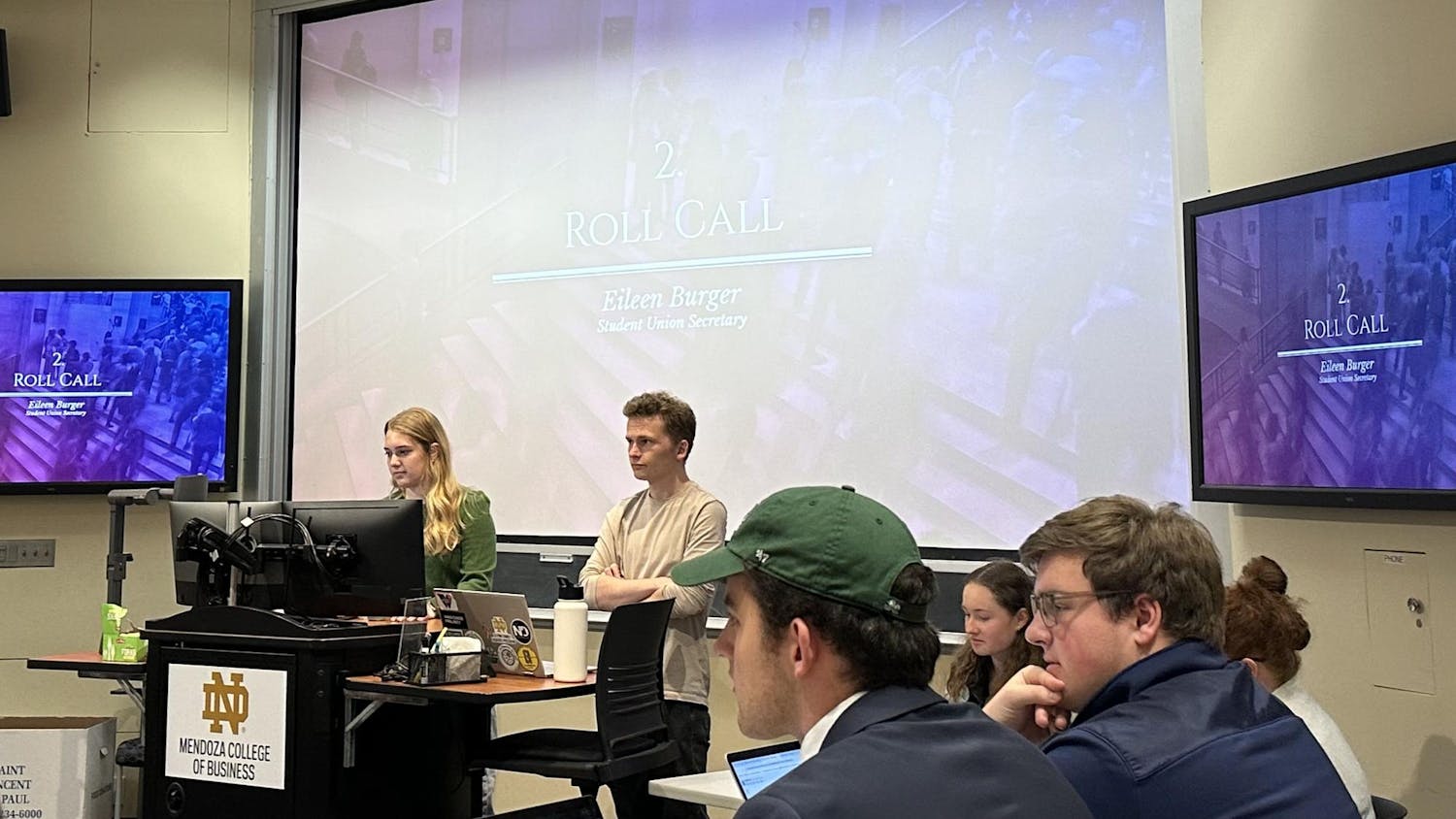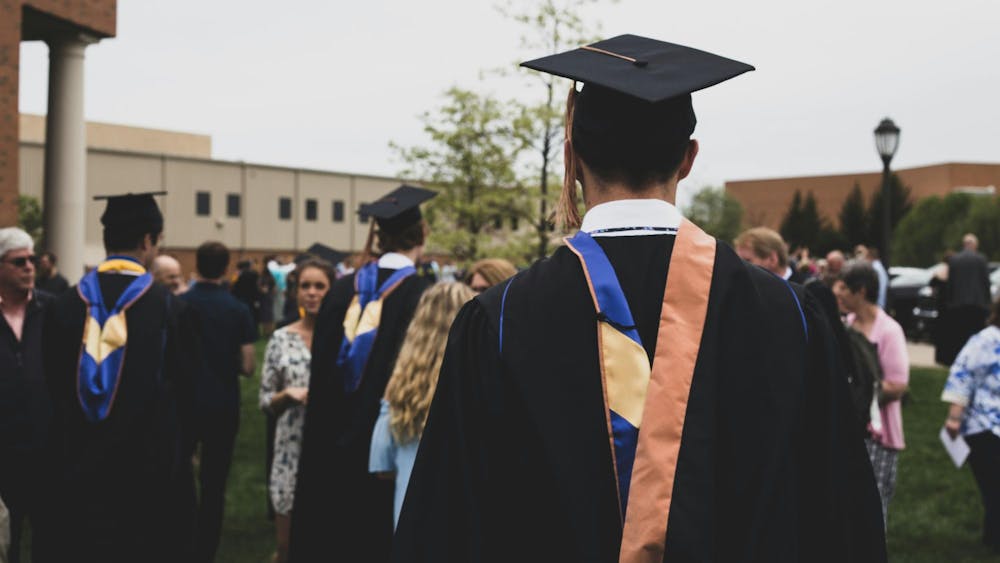Amid the triumph and turmoil of the civil rights movement, the changes of the Second Vatican Council and the push for academic freedom for Catholic universities, the 1960s saw what Fr. Theodore Hesburgh called one of his greatest administrative achievements: placing University decision-making power in the hands of laypeople.
“I would have to say that of all the accomplishments during the 35 years of my presidency at Notre Dame — improving the academics, the quality of the students, the endowment, the building program — the greatest change made during my administration was turning the University over to lay control,” Hesburgh wrote in his 2000 autobiography, "God, Country, Notre Dame."
Until 1967, Holy Cross priests made all major decisions for the University, which was valued at half a billion dollars, Hesburgh wrote. A lay advisory board existed, but it had no real power.
In the summer of 1965, at a University retreat house in Land O’Lakes, Wisconsin, Hesburgh and several other Holy Cross leaders set out to change that.
“The time had come for the priests of the Holy Cross to relinquish ownership and control of the university to a lay board of trustees who would be better equipped to oversee its future well-being,” Hesburgh wrote.
A key motivating factor was the recently-concluded Second Vatican Council, which emphasized involvement of laymen and laywomen in the Church. Hesburgh even wrote his 1945 doctoral dissertation at Catholic University of America on the role of the laity in the Church.
“Vatican II had said that laypeople should be given responsibility in Catholic affairs commensurate with their dedication, their competence and their intelligence,” he wrote. “Many people may not have taken that seriously, but we did. For me, it was the most natural thing in the world.”
The separation of the University from a religious order would also be a step towards establishing its independence and academic freedom, Hesburgh said.
“An organization as big as a Catholic university, which is totally faithful to the Church, wants to go on and be a Catholic university, needs a lot of elbow room,” he told National Public Radio's Fresh Air in 1990. “And I thought we'd have more elbow room if we were run by lay people.”
In early 1967, the process of transferring ownership of the University from the Congregation of Holy Cross to a lay board — which required Vatican approval — began. According to Hesburgh’s autobiography, Fr. Edward Heston, Holy Cross’ procurator general in Rome, put in a request for the transfer.
Approval “sailed right through,” Hesburgh wrote, “which is highly unusual for the Vatican.”
Hesburgh then called in Ed Stephan, a 1933 graduate and a Chicago lawyer, to legally transfer ownership and to set up a new governing structure. A continual priority, Hesburgh said, was to be “careful not to load anything in favor of the clergy.”
“We all wanted Notre Dame to continue as it had before, as a premier Catholic university, and also to grow stronger academically and economically,” he said.
The result was a two-tiered system of governance: a 12-member board of Fellows — six Holy Cross members and six laypeople — and a Board of Trustees, whose members could be lay or religious. The Fellows would set the number of, elect and oversee members of the Board of Trustees, allowing the laity to make decisions but maintaining the voice of the clergy.
Fr. Thomas Blantz, a professor emeritus of history and a trustee emeritus, was an assistant rector on campus in the mid-1960s. He said while he was not involved in the decision to transfer control, Hesburgh was open with the Holy Cross community throughout the process.
“There were very good discussions,” Blantz said. “Fr. Hesburgh was very open in his discussions with the Holy Cross. He’d bring [Stepan], and he was there to answer our questions also, at these meetings.”
Over the next several decades, the new structure resulted in the input of trustees from a range of backgrounds and fields, such as law, business, media and academia, who could both act as examples for Notre Dame students and bring their expertise to the University’s decision-making, Blantz said.
“One of the things a Board of Trustees does is represent the wider public at the University,” Blantz said. “We are, at Notre Dame, every University, training people for life in American society and maybe even leadership in American society. Therefore, it’s probably good to have that perspective of these leaders in American society overseeing your product and how you are doing.”
The expertise of those leaders also helped Notre Dame expand financially. For example, Don Keough, the former chairman of the board of trustees who died last Tuesday, donated or raised billions of dollars for the University.
"We reached out into the world and picked out some of the best leaders in the country like Don Keough, head of Coca-Cola, and he came in, and he helped us carry off a great fundraising campaign," Hesburgh said in an interview with The Observer in 2013.
One of the biggest impact of the transfer, Hesburgh wrote, was to give Notre Dame the independence it needed to expand intellectually.
“I think we are more Catholic today than we were in the past — both big C and little c,” Hesburgh wrote. “One could argue with that, as many do, but I stand by that statement. It is very important that we continue to have independent Catholic universities. They are the very places that do the most of advance Catholic thought and influence in this country.
“We have, and deserve to have, the respect of everyone who values academic freedom and commitment to the principles of reason seeking faith, and faith freely seeking a deeper understanding of all that faith means in our times."













